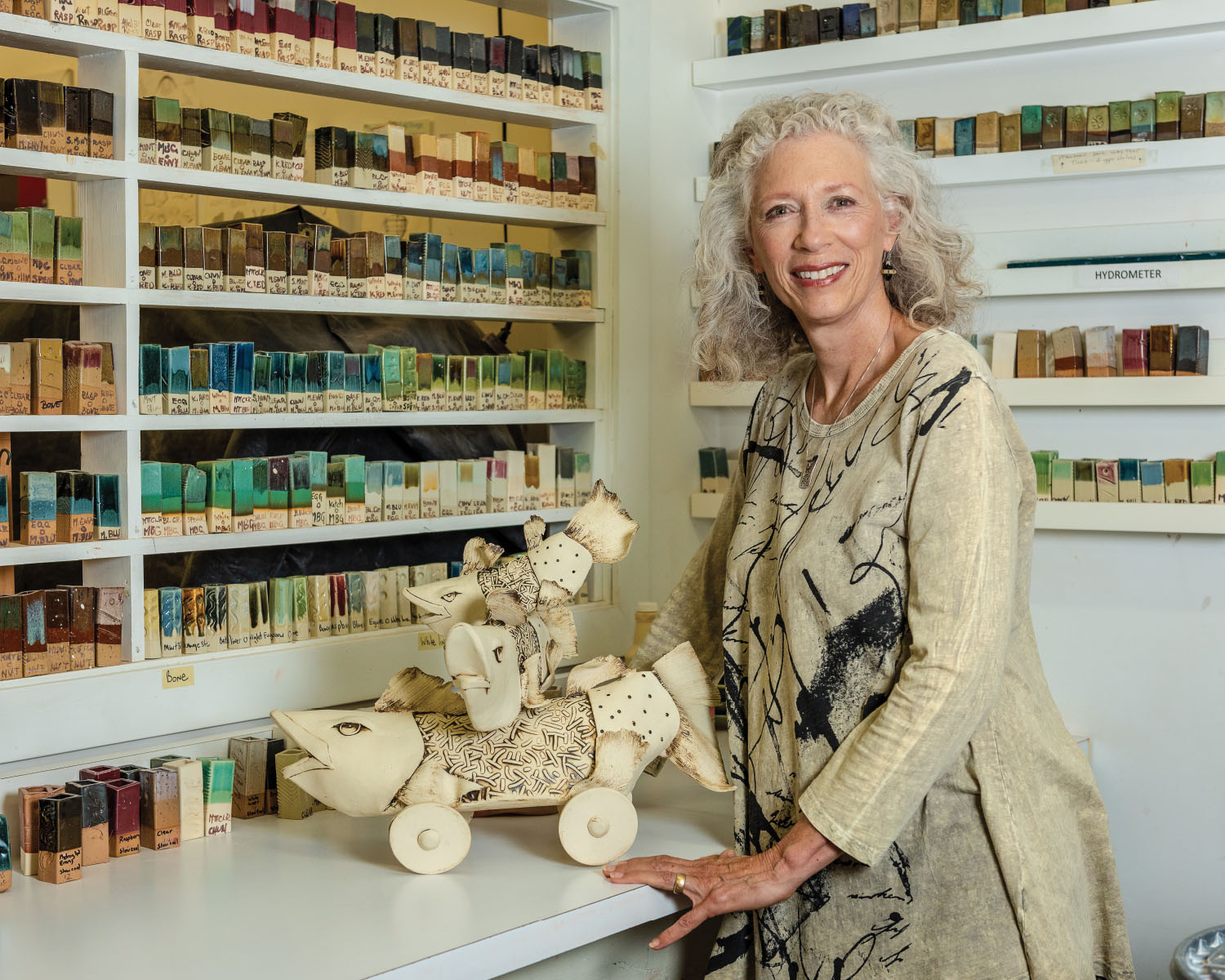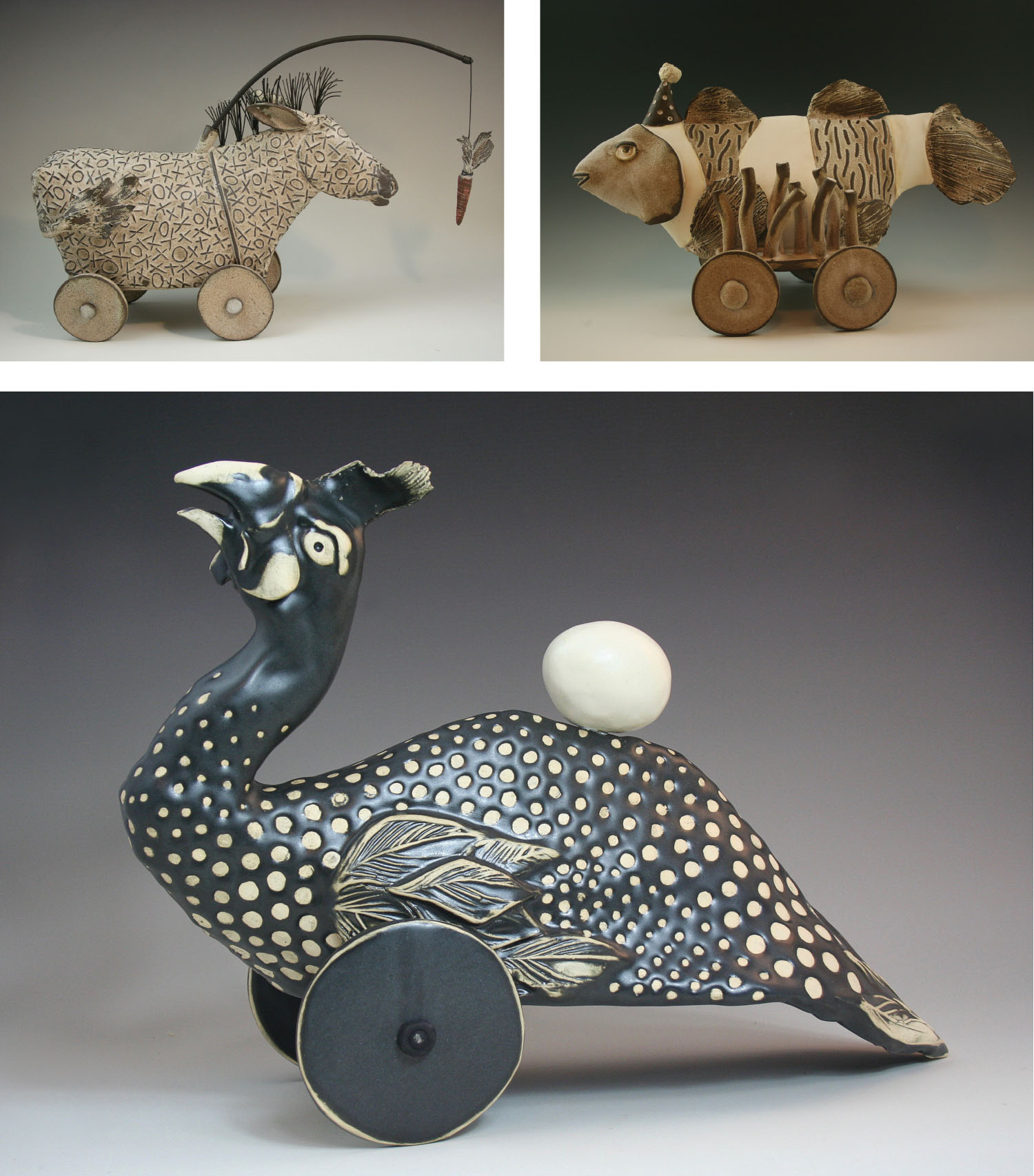
“One of my squirrel sculptures was sitting in the window,” recalls artist Libba Tracy. “A hawk saw it, thought it was real, and flew down to attack it — slamming into the window. Thank goodness the hawk was not injured. A little confused and frustrated, but okay.”
Had the hawk been harmed, Tracy would also have been hurt. “The critters are inspired by my fascination with animals and their behavior,” she explains. And her love includes what she calls an “overwhelming” concern for the “desperateness” of their situation — honeybee and butterfly disappearance, for instance — “all due to the activity of humankind.”
Tracy’s most recent body of work, Critters on Go, are kiln-fired pieces that are way more whimsical than her previous realistic work. Although she made fish that are meant to be displayed “swimming up a wall,” most of her animals have wheels under them — and she’s not sure why.
“I can’t answer that, except to say that it appealed to me. And not all the critters I sculpt are ones that are in trouble. They’re just whatever ones interest me.” Many arise from casual folklore: she made a counting sheep “for people who cant sleep at night,” a donkey chasing a carrot, and a raven grabbing a golden ring.
For a long time, she was a painter. But seven years ago, she started working in ceramics, finding deeper imaginative possibilities in three dimensions.
“Curiosity is a beautiful thing,” she says. “It will have you try this and that and the other, in terms of mediums, to see what will hit. The beauty of ceramics is there are so many different directions you can go with it, and it will unfold in ways that you don’t expect. For me, that’s a real delight.”
She still picks up a brush, however, when community-awareness projects call for it. “I painted for a mural on the side of the Black Mountain Center for the Arts. It shows one full-color monarch butterfly, and then a swarm of others I painted white, to represent the 95 percent of the monarch population that’s gone. When I was child, they would come through here in droves, during their migration. Now, not so much.
“The older you get, the more it’s in your face, the environmental issues that threaten nature. The trick is to figure out how to bring about awareness. It’s a blast for me, to see if I can pull if off.”

Libba Tracy, the Squeaky Wheel Potters Studio in the Hatchery Building (1 Roberts St. in Asheville’s River Arts District). squeakywheelpottery.org. She is a co-op member of Odyssey’s Clingman Gallery (238 Clingman Ave., River Arts District). odysseycoopgallery.com, where she exhibits her “Critters on the Go”. Her work can also be found at Grovewood Gallery (111 Grovewood Road, North Asheville), including pieces in the “Animal Attraction” invitational exhibit opening Saturday, Sept. 22 with a 2-5pm reception and running through Sunday, Oct. 28; grovewood.com.